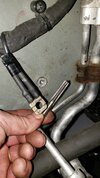At the SC now. They found that the "low coolant" alarm is valid! I was told that two valves are leaking in the coolant system, the 3-way valve and the 4-way valve. Both are being replaced. Not clear how much they were leaking or how low the coolant actually got.
As for the other electrical glitches (frunk latch alarm, headlight not working, and security alarm going off, I was told they replaced the ground point. Not clear if there is any connection between the coolant leaks and the ground point, or if it is totally a coincidence.
As for the other electrical glitches (frunk latch alarm, headlight not working, and security alarm going off, I was told they replaced the ground point. Not clear if there is any connection between the coolant leaks and the ground point, or if it is totally a coincidence.



